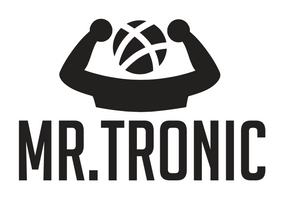Wiring an office with Ethernet cables is a critical task that requires careful planning and execution. IT professionals and network administrators are tasked with ensuring the network is both efficient and reliable. However, common pitfalls can compromise the performance and scalability of office networks. Here are the top 5 mistakes to avoid when wiring your office with Ethernet cables, along with advice on how to sidestep these issues.
1. Using Inappropriate Cable Types
Mistake: Opting for the cheapest or the wrong category of Ethernet cables without considering the network's current and future needs.
Solution: Evaluate your office's bandwidth and performance requirements. For most modern offices, CAT6 cables, like the Mr. Tronic Bulk Cat 6 Ethernet Cable 305m, offer a balance between cost, performance, and future-readiness, supporting speeds up to 1 Gbps and a frequency of 250 MHz. For less demanding environments, CAT5e cables, such as the Mr. Tronic Bulk Cat 5E Ethernet Cable 305m, can be a cost-effective solution that still meets the needs of many office networks.
2. Neglecting Cable Management
Mistake: Overlooking the importance of organized cable management, leading to tangled cables and difficulty in troubleshooting or upgrading the network.
Solution: Implement comprehensive cable management solutions from the start. Use cable trays, conduits, and cable ties to keep cables organized and labeled. This not only makes maintenance easier but also helps prevent signal interference and physical damage to the cables.
3. Ignoring Cable Length Limitations
Mistake: Running Ethernet cables beyond their effective maximum length (100 meters for CAT5e and CAT6), resulting in signal degradation and network performance issues.
Solution: Plan your network layout to ensure that cable runs do not exceed the 100-meter maximum. If longer distances are required, use network switches or Ethernet repeaters to bridge the gap without sacrificing signal quality.
4. Overlooking Interference Sources
Mistake: Installing Ethernet cables near sources of electromagnetic interference (EMI), such as power lines, lights, and heavy machinery, which can cause data transmission errors and network instability.
Solution: Maintain a safe distance between Ethernet cables and potential sources of EMI. If unavoidable, opt for shielded Ethernet cables (STP) which offer better protection against interference than unshielded (UTP) cables.
5. Failing to Future-Proof the Network
Mistake: Installing just enough network capacity for current needs without considering future growth or advancements in technology.
Solution: Future-proof your network by choosing cables that offer higher bandwidth and speed capabilities than currently required. Additionally, install more ports and run extra cables to accommodate future network expansions or technological upgrades without the need for a complete overhaul.
Conclusion
Avoiding these common mistakes when wiring your office with Ethernet cables ensures a robust and scalable network infrastructure. By selecting the appropriate cable type, implementing effective cable management, adhering to length limitations, considering interference sources, and planning for the future, IT professionals and network administrators can establish a high-performing and reliable office network. Mr. Tronic's bulk Ethernet cables offer high-quality solutions for both CAT5e and CAT6 requirements, providing the foundation for a well-structured and efficient network.
